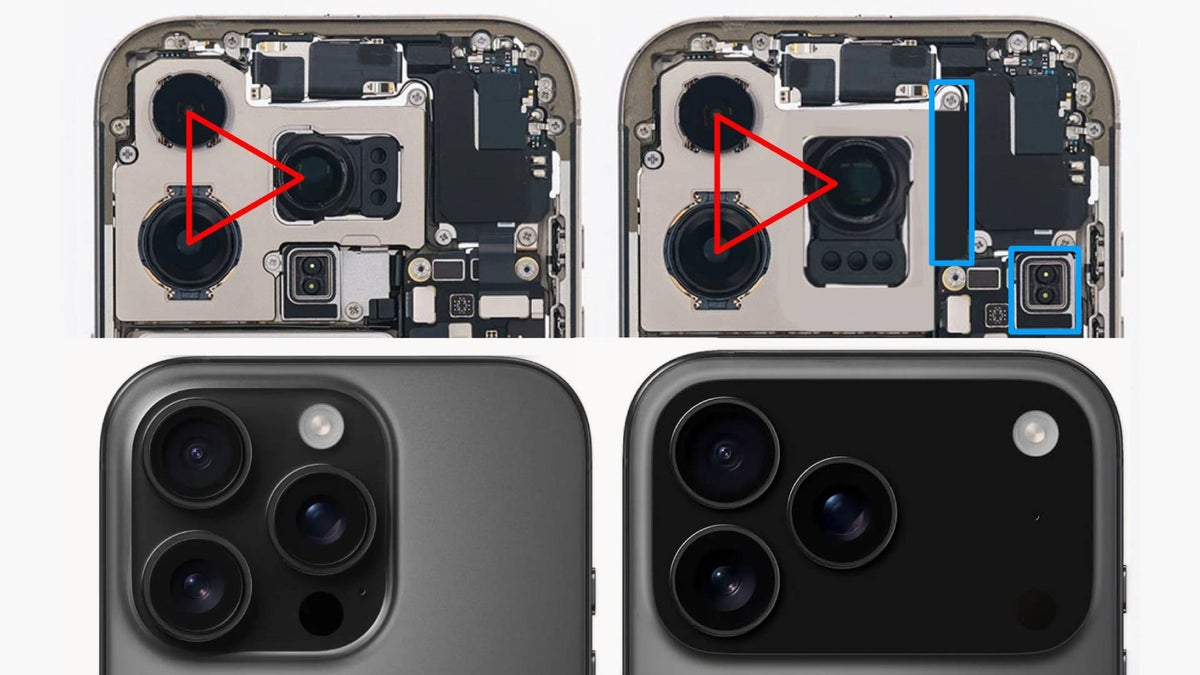"Composition rules are valuable, but can be limiting. Experiment with unconventional approaches that highlight the subject, rather than forcing camera techniques that don’t fit"
Not every composition strategy suits every subject! Katarzyna Kujawska explains how to find the most drama in your scene
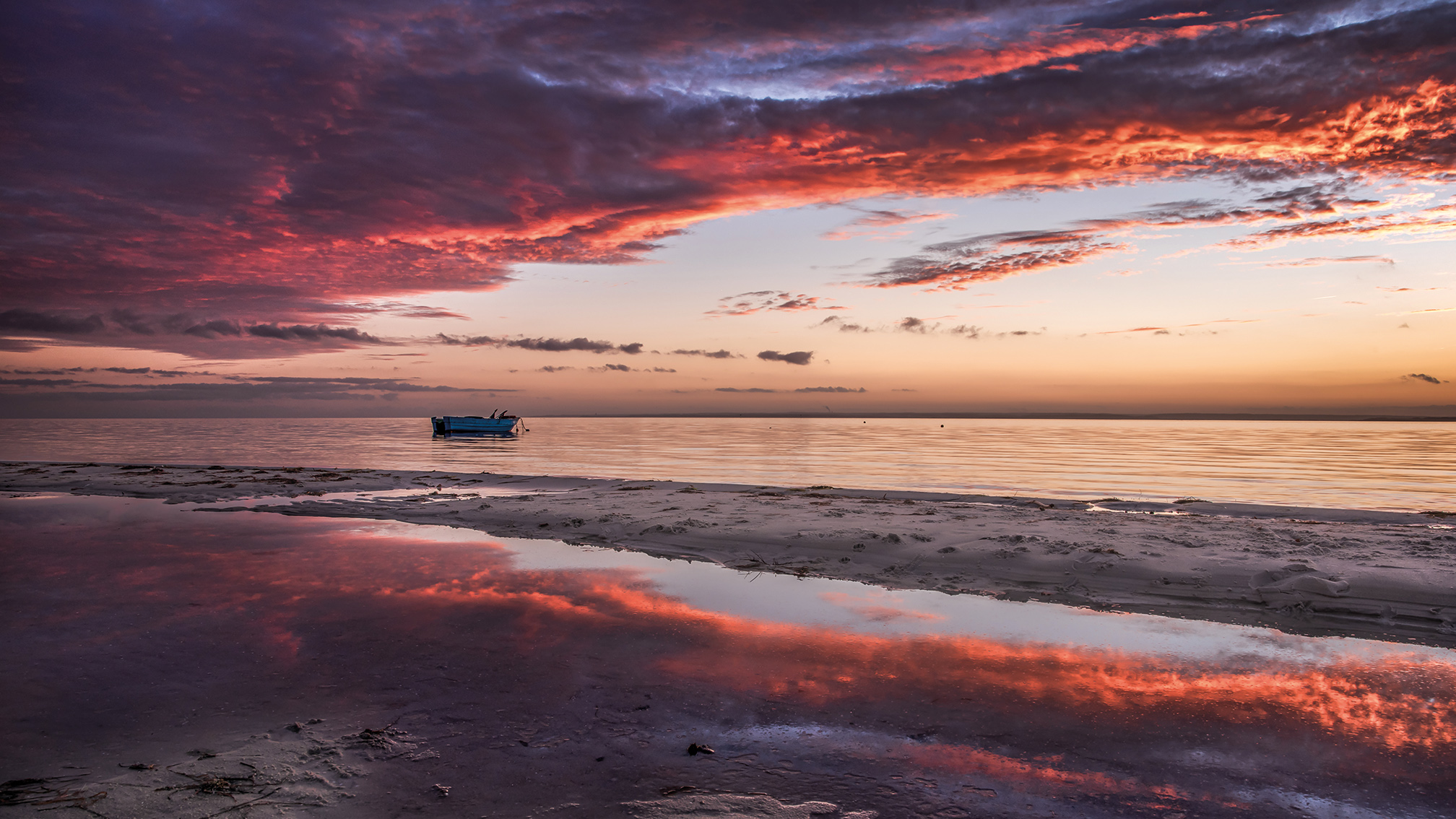
Images with a dramatic impact have the goal of attracting the viewer’s attention, drawing them into the image, and focusing their attention on the main elements of the frame – so following the optimal composition is essential.
What I like about dramatic compositions most is their dynamics – each composition must be well thought out. In the field, consider how to use the current surroundings to make the photo interesting for the viewer. The photographer’s task is to create a composition that is a visual story of a given moment, and which a viewer can interpret in any way.
Not every composition strategy suits every scene, so rather than focusing on applying one specific strategy, maintain a fresh perspective and apply compositional techniques individually. Although classic composition rules are valuable, they can be limiting, so experiment with unconventional approaches that highlight the subject, rather than forcing techniques that don’t fit.
First of all: contrast, understood in the broad sense of the word, plays an important role here. This applies to light and shadow, bright expressive colors combined with pastels, moving objects and static objects.
It is also about combining what the viewer perceives as beautiful and ugly. I am from Poland and we still come across artifacts of World War II on the beaches, including bunkers or ruins such as the building where torpedoes were tested.
I often use symmetry in my photographs, which draws the viewer deeper into the photo. Leading lines and placing distinctive landscape elements in strong points are other interesting elements of the composition that can be used.
I also like to create dynamic foregrounds to immerse the viewer in the image – and seascapes are perfect for this. Capturing the elements that are in motion, such as the waves or clouds, plays an important role here.
The sea currents and blowing wind make it possible to photograph waves, which are one of my favorite subjects to shoot in dramatic photography.
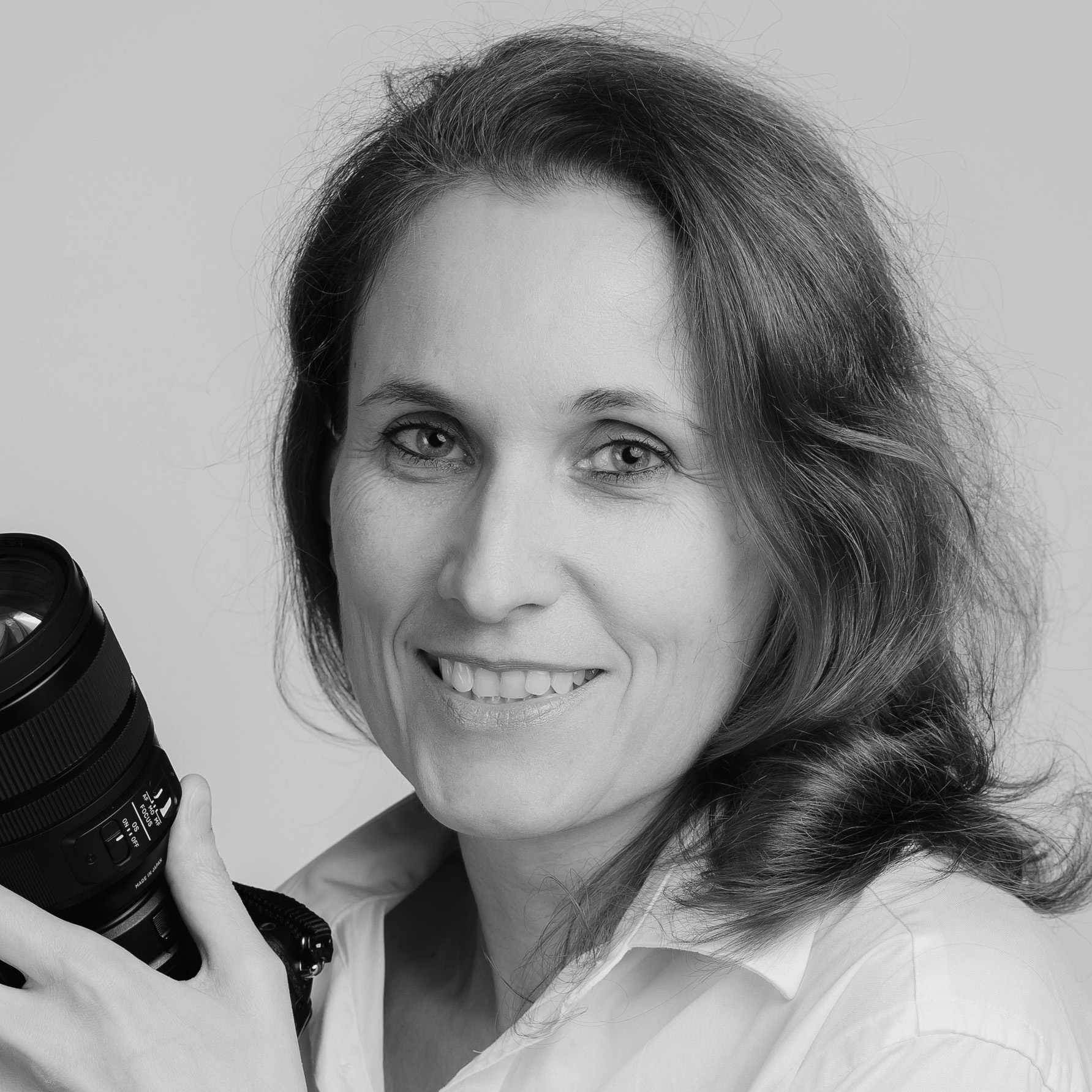
Katarzyna Kujawska is a Polish photographer who specializes in scenic and seascape photography. She has honed her craft over the past five years and, in 2023, attained a Certificate of Professional Title in the field of image registration, processing, and publication. Katarzyna’s captivating photographic works are showcased at both individual and collective exhibitions held in the Pomerania region of northern Poland, where she currently lives.
Examples
Go low
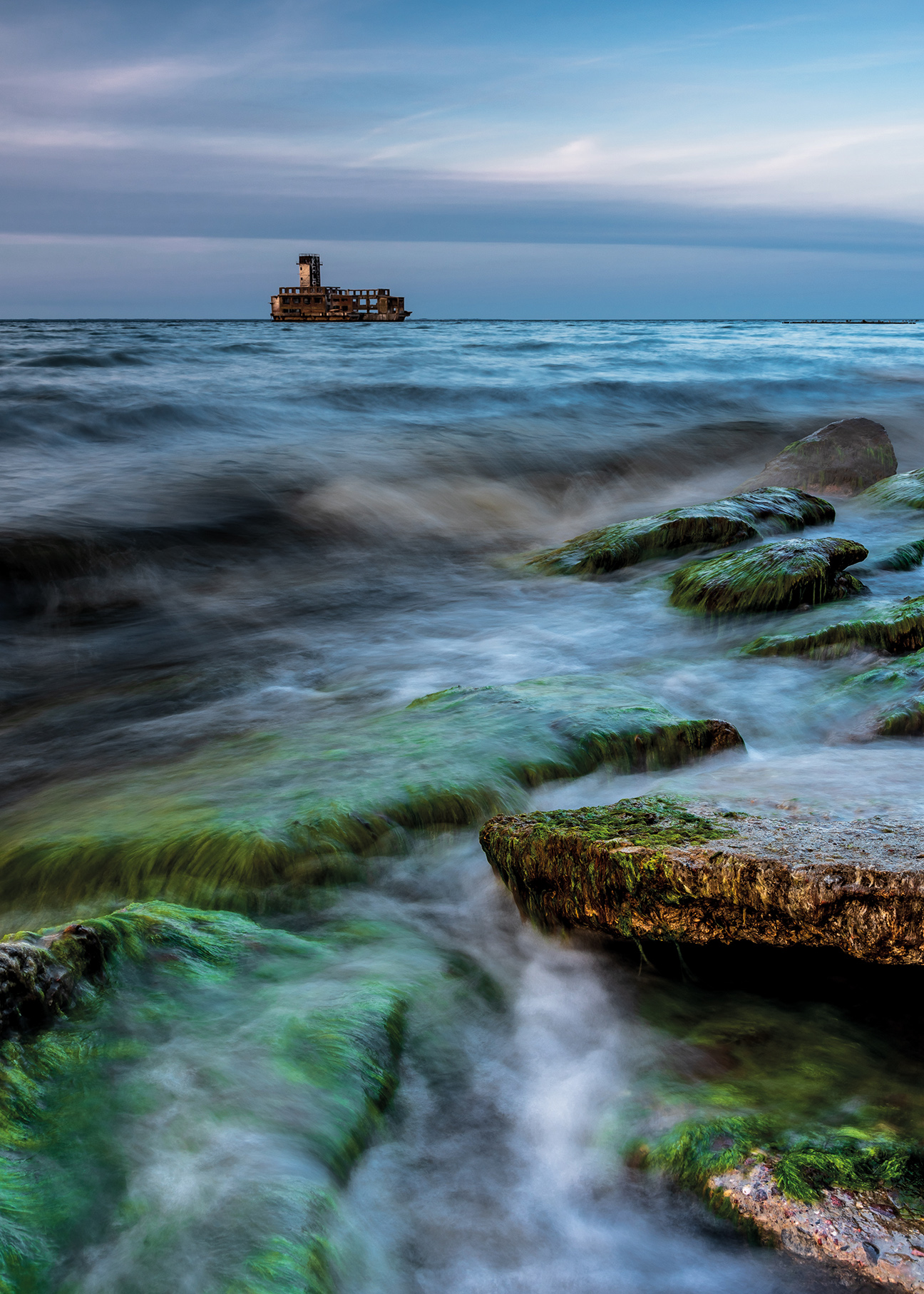
Why lowering the eye level is a clever approach when composing a dynamic subject
Adopting a low angle when shooting is ideal for capturing objects that are just above the ground, as is the case with this image. The waves crashing over the concrete slabs and stones covered with algae make a perfect foreground, while in the background of the frame are the ruins of the Hexengrund torpedo research facility near Gdynia in Poland, which was used by the Luftwaffe in World War II.
This shot was taken just before sunset and the whole setting is in cool blue and green colors, which strengthens the dramatic character of the photo.
Create symmetry
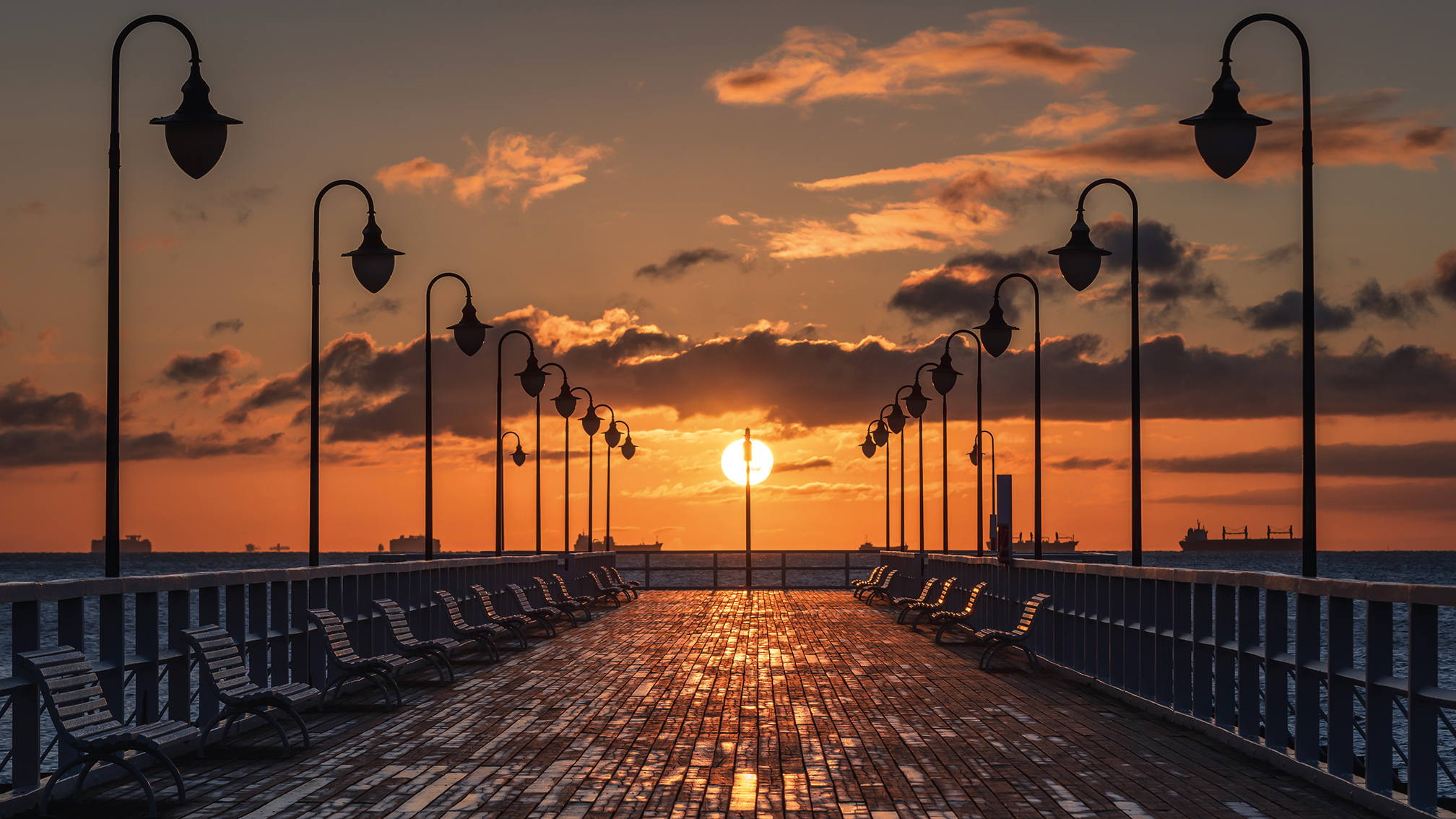
Draw the viewer in using lines, repeating elements and tonal range
The most interesting elements of this composition are the symmetry and leading lines, which draw the viewer deeper into the picture. However, for creating a photo with a dramatic character, you need a little more – so in this case, I used a wide tonal range.
Here, the sun is the main subject and also the brightest object, with the leading lines being much darker. The streetlights are turned off, which makes them appear almost black when photographing against the sun.
I took this photo in Gdynia, Poland. In spring and fall you can photograph the rising sun here, and I pressed the shutter when it was perfectly aligned with the pier. I used a subtle vignette to emphasize the direction of light.
Pro Advice
Analyze the scene
First, it is vital to decide on what elements you want to focus on. "Paying attention to atmospheric conditions like light, shadows and colors as well as the surrounding objects is key," says Katarzyna. "Think about what composition strategies and photographic techniques you can apply to highlight the subject."
Find your point of view
Now, explore the part of the landscape you want to photograph from different viewpoints. "It is worth doing that through the viewfinder or camera screen. Adjust the point of view to the location of the most dramatic feature in the frame and its subject matter."
Decide on strategy
Remember those tried-and-tested composition strategies that highlight the subject. "Determine the composition – look for symmetric elements and leading lines or apply the rule of thirds. Keep an eye on the landscape shape, the subject’s appearance and its location."
You might also like…
Take a look at our landscape photography tips for more expert insight. If it's time to upgrade your gear, check out the best cameras for landscape photography and the best lenses for landscapes.
Get the Digital Camera World Newsletter
The best camera deals, reviews, product advice, and unmissable photography news, direct to your inbox!
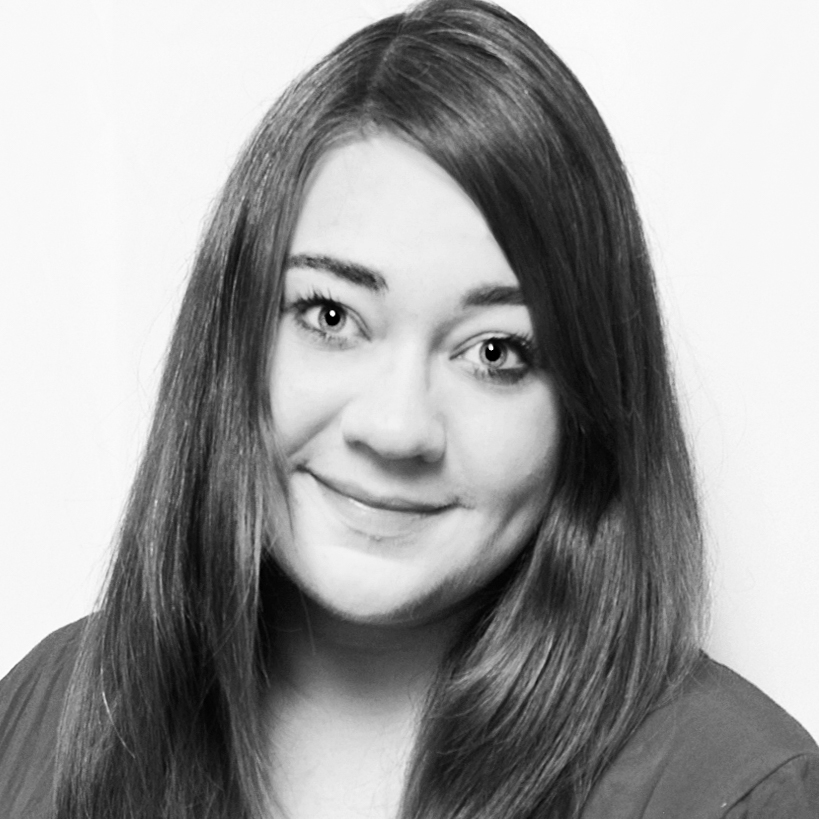
Kim is the Staff Writer on Digital Camera World, and formerly Technique Editor at Digital Photographer, focusing on the art and science of photography. With a Master’s degree in Photography and Media, she is driven to educate through an analytical approach, visually and technically. With her guides and tutorials, Kim seeks to uncover new facets of this time-honoured medium and foster a deeper understanding of its profound role in culture. Kim highlights topics that resonate with modern society, including women in photography and critical issues such as environmental conservation. She also discusses and reviews camera gear, giving you an overview to find the best fit for your photography journey.
You must confirm your public display name before commenting
Please logout and then login again, you will then be prompted to enter your display name.
